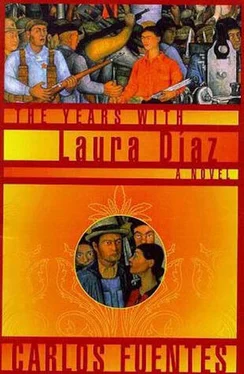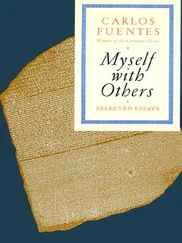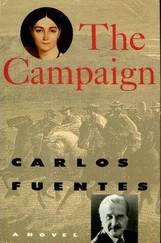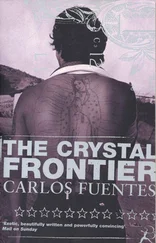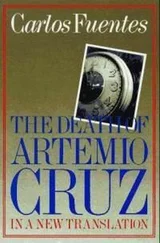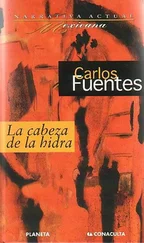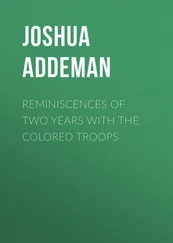Here he was. Rivera, Diego, Diego María of Guanajuato, Diego María Concepción Juan Nepomuceno de la Rivera y Barrientos Acosta y Rodríguez, 1886–1957.
Pardon me for laughing. It’s a good kind of laugh, an irrepressible guffaw of recognition and perhaps of nostalgia. For what? I think for lost innocence; for faith in industry; for progress, happiness, and history joining hands thanks to industrial development. To all those glories Rivera had sung praise, as you’d have to in Detroit. Like the anonymous architects, painters, and sculptors of the Middle Ages who built and decorated the great cathedrals to praise God — one, everlasting, indivisible — Rivera came to Detroit as pilgrims long ago went to Canterbury and Compostela: full of faith. I also laughed because this mural was like a color postcard of the black-and-white setting for Chaplin’s movie Modern Times. The same machines, smooth as mirrors, the perfect, implacable meshing of gears, the confidence-inspiring factories that Rivera the Marxist saw as an equally trustworthy sign of progress but that Chaplin saw as devouring jaws, swallowing machines, like iron stomachs gobbling up the worker and at the end expelling him like a piece of shit.
Not here. This was the industrial idyll, the reflection of the immensely rich city Rivera saw during the 1930s, when Detroit gave jobs and a decent life to half a million workers.
How did the Mexican painter see them?
There was something strange in this mural, with its teeming activity and spaces crowded with human figures working at shining serpentine, unending machines like the intestines of a prehistoric animal that was taking a long time to slouch back toward the present age. It also took me a long time to locate the source of my own surprise. I had a displaced and exciting sensation of creative discovery — very rare in television work. Here I am in Detroit, standing in front of a mural by Diego Rivera because I depend on my audience just as Rivera, perhaps, depended on his patrons. But he made fun of them, he planted red flags and Soviet leaders right in the very bastion of capitalism. On the other hand, I wouldn’t deserve either the censure or the scandal: the audience gives me success or failure, nothing more. Click. The idiot box turns off. There are no more patrons, and what’s more no one gives a fuck. Who remembers the first soap opera they ever saw — or, for that matter, the last?
But that sensation of surprise in front of such a well-known mural wouldn’t let me alone or let me film as I wanted. I scrutinized things. I used the pretext of wanting the best angle, the best light. Techies are patient. They respected my efforts. Until I figured it out: I’d been looking without seeing. All the American workers Diego painted have their backs to the spectator. The artist painted only working backs, except when the white workers are using goggles to protect themselves from sparks thrown by the welding torches. The American faces are anonymous. Masked. Rivera saw them the way they see us, Mexicans. With their backs turned. Anonymous. Faceless. Rivera wasn’t laughing then, he wasn’t Charlie Chaplin, he was only a Mexican who dared to say, None of you has a face. He was the Marxist who told them, Your work has neither the worker’s name nor his face, your work is not your own.
In contrast, who is looking out at the spectator?
The blacks. They do have faces. They had faces in 1932, when Rivera came to paint and Frida checked into Henry Ford Hospital, and the great scandal was a Holy Family that Diego introduced into the mural ostensibly as a provocation, although Frida was pregnant and lost the child and instead of a child gave birth to a rag doll and the baptism of the doll was attended by parrots, monkeys, doves, a cat, and a deer … Was Rivera mocking the gringos or did he fear them? Was that why he didn’t paint them facing the world?
The artist never knows what the spectator knows. We know the future, and in that mural of Rivera’s, the black faces that do dare to look outward, who did dare to look at us, had fists and not only to build Ford’s cars. Without knowing it, by pure intuition, Rivera in 1932 painted the blacks who on July 30, 1967—the date is burned into the heart of the city — set fire to Detroit, sacked it, shot it to pieces, reduced it to ashes, and delivered forty-three bodies to the morgue. Were those the only people who looked out from the mural, those forty-three, future dead men painted by Diego Rivera in 1932 and killed in 1967, ten years after the death of the painter, thirty-five years after being painted?
A mural only appears to disclose itself at a glance. Actually, its secrets require a long, patient look, an examination which does not wear itself out, not even in the space of the mural, but which extends to all those who prolong it. Inevitably, the mural’s context renders the gaze of the figures eternal, along with that of the spectator. Something strange happened to me. I had to direct my own gaze outside the mural’s perimeter in order to return violently — the way a movie camera can move like an arrow from a full shot to a brutal close-up, to the detail — to the faces of the women workers, masculinized by their short hair and overalls but, no doubt of it, feminine figures. One of them is Frida. But her companion, not Frida but the other woman in the painting — her aquiline features, consistent with her large stature, her melancholy eyes with shadows under them, her lips thin but sensual in their very thinness, as if the fugitive lines of her mouth were proclaiming a superiority that was strict, sufficient, unadorned, sober, and inexhaustible, abounding in secrets when she spoke, ate, made love …
I looked at those almost golden eyes, mestizo, between European and Mexican, I looked at them as I’d looked at them so often in a forgotten passport found in a trunk as outdated as the document itself. I’d looked at them just as I had at other photos hung up, scattered around, or put away all over the house of my young father, murdered in October 1968. Those eyes my dead memory didn’t recognize but my living memory retained in my soul decades later, now that I’m about to turn thirty and the twentieth century is about to die; trembling, I stared at those eyes with an almost sacred consternation which lasted so long that my team stopped, gathered around — was something wrong with me?
Was something wrong with me? Did I remember something? I was staring at the face of that strange beautiful woman dressed as a worker, and as I did, all the forms of recollection, memory of whatever you call those privileged instants of life, poured into my head like an ocean whose unleashed waves are always yet never the same: it’s the face of Laura Díaz I’ve just seen; the face revealed in the hurly-burly of the mural is that of one woman and one woman only, and her name is Laura Díaz.
The cameraman, Terry Hopkins, an old — even if young — friend, gave the painted wall a final illumination, filtered through blue accents, perhaps as an act of farewell (Terry is a poet), for his lighting blended in perfectly with the real sunset of the day we were living through in February 1999.
“Are you crazy?” he asked. “You’re walking back to the hotel?”
I don’t know what kind of look I gave him, but he didn’t say another word. We separated. They packed up the annoying (and expensive) film equipment. They went off in the van.
I was left alone with Detroit, a city on its knees. I started walking slowly.
Free, with the fury of a teenage onanist, I began to take pictures in all directions, of black prostitutes and young black policewomen, of black boys wearing ragged woolen caps and thin jackets, of old people huddled around a garbage can turned into a street fireplace, of abandoned houses — I felt I was getting inside all of them — the misérables with no refuge, junkies who injected themselves with pleasure and scum in corners, I photographed all of them insolently, idly, provocatively, as if I were traveling down a blind alley where the invisible man wasn’t any of them but me, I myself suddenly restored to the tenderness, nostalgia, affection of a woman whom I never in my life met but who had filled my life with all those kinds of memory that are both involuntary and voluntary, both a privilege and a danger: memories that are simultaneously expulsion from home and return to the maternal house, a fearsome encounter with the enemy and a longing for the original cave.
Читать дальше
